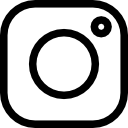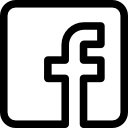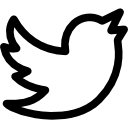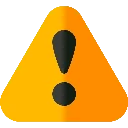Neurochemistry 1.5: Psychoneuroendocrinology 1.6: Immune System and Central Nervous System Interactions 1.7: Neurogenetics 1.8: Applied Electrophysiology 1.9: Chronobiology 2: Contributions of the Psychosocial Sciences 2.1: Jean Piaget and Cognitive Development 2.2: Attachment Theory 2.3: Learning Theory 2.4: Biology of Memory 2.5: Normality and Mental Health 3: Contributions of the Sociocultural Sciences 3.1: Sociobiology and Ethology 3.2: Transcultural Psychiatry 3.3: Culture-Bound Syndromes 4: Theories of Personality and Psychopathology 4.1: Sigmund Freud: Founder of Classic Psychoanalysis 4.2: Erik H. Erikson 4.3: Other Psychodynamic Schools 4.4: Positive Psychology 5: Examination and Diagnosis of the Psychiatric Patient 5.1: Psychiatric Interview, History, and Mental Status Examination 5.2: The Psychiatric Report and Medical Record 5.3: Psychiatric Rating Scales 5.4: Clinical Neuropsychology and Intellectual Assessment of Adults 5.5: Personality Assessment: Adults and Children 5.6: Neuropsychological and Cognitive Assessment of Children 5.7: Medical Assessment and Laboratory Testing in Psychiatry 5.8: Neuroimaging 5.9: Physical Examination of the Psychiatric Patient 6: Classification in Psychiatry 7: Schizophrenia Spectrum and Other Psychotic Disorders 7.1: Schizophrenia 7.2: Schizoaffective Disorder 7.3: Schizophreniform Disorder 7.4: Delusional Disorder and Shared Psychotic Disorder 7.5: Brief Psychotic Disorder, Other Psychotic Disorders, and Catatonia 8: Mood Disorders 8.1: Major Depression and Bipolar Disorder 8.2: Dysthymia and Cyclothymia 9: Anxiety Disorders 9.1: Overview 9.2: Panic Disorder 9.3: Agoraphobia 9.4: Specific Phobia 9.5: Social Anxiety Disorder (Social Phobia) 9.6: Generalized Anxiety Disorder 9.7: Other Anxiety Disorders 10: Obsessive-Compulsive and Related Disorders 10.1: Obsessive-Compulsive Disorder 10.2: Body Dysmorphic Disorder 10.3: Hoarding Disorder 10.4: Hair-Pulling Disorder (Trichotillomania) 10.5: Excoriation (Skin-Picking) Disorder 11: Trauma- and Stressor-Related Disorders 11.1: Posttraumatic Stress Disorder and Acute Stress Disorder 9/11/01 11.2: Adjustment Disorders 12: Dissociative Disorders 13: Psychosomatic Medicine 13.1: Introduction and Overview 13.2: Somatic Symptom Disorder 13.3: Illness Anxiety Disorder 13.4: Functional Neurological Symptom Disorder (Conversion Disorder) 13.5: Psychological Factors Affecting Other Medical Conditions 13.6: Factitious Disorder 13.7: Pain Disorder 13.8: Consultation-Liaison Psychiatry 14: Chronic Fatigue Syndrome and Fibromyalgia 15: Feeding and Eating Disorders 15.1: Anorexia Nervosa 15.2: Bulimia Nervosa 15.3: Binge Eating Disorder and Other Eating Disorders 15.4: Obesity and the Metabolic Syndrome 16: Normal Sleep and Sleep-Wake Disorders 16.1: Normal Sleep 16.2: Sleep-Wake Disorders 17: Human Sexuality and Sexual Dysfunctions 17.1: Normal Sexuality 17.2: Sexual Dysfunctions 17.3: Paraphilic Disorders 18: Gender Dysphoria 5-α-Reductase Deficiency. 19: Disruptive, Impulse-Control, and Conduct Disorders 20: Substance Use and Addictive Disorders 20.1: Introduction and Overview 20.2: Alcohol-Related Disorders 20.3: Caffeine-Related Disorders 20.4: Cannabis-Related Disorders 20.5: Hallucinogen-Related Disorders 20.6: Inhalant-Related Disorders 20.7: Opioid-Related Disorders 20.8: Sedative-, Hypnotic-, or Anxiolytic-Related Disorders 20.9: Stimulant-Related Disorders 20.10: Tobacco-Related Disorders 20.11: Anabolic-Androgenic Steroid Abuse 20.12: Other Substance Use and Addictive Disorders 20.13: Gambling Disorder 21: Neurocognitive Disorders 21.1: Introduction and Overview 21.2: Delirium 21.3: Dementia (Major Neurocognitive Disorder) 21.4: Major or Minor Neurocognitive Disorder Due to Another Medical Condition (Amnestic Disorders) 21.5: Neurocognitive and Other Disorders Due to a General Medical Condition 21.6: Mild Cognitive Impairment 22: Personality Disorders 23: Emergency Psychiatric Medicine 23.1: Suicide 23.2: Psychiatric Emergencies in Adults 23.3: Psychiatric Emergencies in Children 24: Complementary and Alternative Medicine in Psychiatry 25: Other Conditions that May be a Focus of Clinical Attention 26: Physical and Sexual Abuse of Adults 27: Psychiatry and Reproductive Medicine 28: Psychotherapies 28.1: Psychoanalysis and Psychoanalytic Psychotherapy 28.2: Brief Psychodynamic Psychotherapy 28.3: Group Psychotherapy, Combined Individual and Group Psychotherapy, and Psychodrama 28.4: Family Therapy and Couples Therapy 28.5: Dialectical Behavior Therapy 28.6: Biofeedback 28.7: Cognitive Therapy 28.8: Behavior Therapy 28.9: Hypnosis 28.10: Interpersonal Therapy 28.11: Narrative Psychotherapy 28.12: Psychiatric Rehabilitation 28.13: Combined Psychotherapy and Pharmacotherapy 28.14: Genetic Counseling 28.15: Mentalization-Based Therapy and Mindfulness 29: Psychopharmacological Treatment 29.1: General Principles of Psychopharmacology 29.2: Medication-Induced Movement Disorders 29.3: α2-Adrenergic Receptor Agonists, α1-Adrenergic Receptor Antagonists: Clonidine, Guanfacine, Prazosin, and Yohimbine 29.4: β-Adrenergic Receptor Antagonists 29.5: Anticholinergic Agents 29.6: Anticonvulsants 29.7: Antihistamines 29.8: Barbiturates and Similarly Acting Drugs 29.9: Benzodiazepines and Drugs Acting on GABA Receptors 29.10: Bupropion 29.11: Buspirone 29.12: Calcium Channel Blockers 29.13: Carbamazepine and Oxcarbazepine 29.14: Cholinesterase Inhibitors and Memantine 29.15: Disulfiram and Acamprosate 29.16: Dopamine Receptor Agonists and Precursors 29.17: Dopamine Receptor Antagonists (First-Generation Antipsychotics) 29.18: Lamotrigine 29.19: Lithium 29.20: Melatonin Agonists: Ramelteon and Melatonin 29.21: Mirtazapine 29.22: Monoamine Oxidase Inhibitors 29.23: Nefazodone and Trazodone 29.24: Opioid Receptor Agonists 29.25: Opioid Receptor Antagonists: Naltrexone, Nalmefene, and Naloxone 29.26: Phosphodiesterase-5 Inhibitors 29.27: Selective Serotonin–Norepinephrine Reuptake Inhibitors 29.28: Selective Serotonin Reuptake Inhibitors 29.29: Serotonin–Dopamine Antagonists and Similarly Acting Drugs (Second-Generation or Atypical Antipsychotics) 29.30: Stimulant Drugs and Atomoxetine 29.31: Thyroid Hormones 29.32: Tricyclics and Tetracyclics 29.33: Valproate 29.34: Nutritional Supplements and Medical Foods 29.35: Weight Loss Drugs 30: Brain Stimulation Methods 30.1: Electroconvulsive Therapy 30.2: Other Brain Stimulation Methods 30.3: Neurosurgical Treatments and Deep Brain Stimulation 31: Child Psychiatry 31.1: Introduction: Infant, Child, and Adolescent Development 31.2: Assessment, Examination, and Psychological Testing 31.3: Intellectual Disability 31.4: Communication Disorders 31.4a Language Disorder 31.4b: Speech Sound Disorder 31.4c: Child-Onset Fluency Disorder (Stuttering) 31.4d: Social (Pragmatic) Communication Disorder 31.4e: Unspecified Communication Disorder 31.5: Autism Spectrum Disorder 31.6: Attention Deficit/Hyperactivity Disorder 31.7: Specific Learning Disorder 31.8: Motor Disorders 31.8a: Developmental Coordination Disorder 31.8b: Stereotypic Movement Disorder 31.8c: Tourette’s Disorder 31.8d: Persistent (Chronic) Motor or Vocal Tic Disorder 31.9: Feeding and Eating Disorders of Infancy or Early Childhood 31.9a: Pica 31.9b: Rumination Disorder 31.9c: Avoidant/Restrictive Food Intake Disorder 31.10: Elimination Disorders 31.10a: Encopresis 31.10b: Enuresis 31.11: Trauma- and Stressor-Related Disorders in Children 31.11a: Reactive Attachment Disorder and Disinhibited Social Engagement Disorder 31.11b: Posttraumatic Stress Disorder of Infancy, Childhood, and Adolescence 31.12: Mood Disorders and Suicide in Children and Adolescents 31.12a: Depressive Disorders and Suicide in Children and Adolescents 31.12b: Early-Onset Bipolar Disorder 31.12c: Disruptive Mood Dysregulation Disorder 31.12d: Oppositional Defiant Disorder 31.12e: Conduct Disorder 31.13: Anxiety Disorders of Infancy, Childhood, and Adolescence 31.13a: Separation Anxiety Disorder, Generalized Anxiety Disorder, and Social Anxiety Disorder (Social Phobia) 31.13b: Selective Mutism 31.14: Obsessive-Compulsive Disorder in Childhood and Adolescence 31.15: Early-Onset Schizophrenia 31.16: Adolescent Substance Abuse 3,4-Methylenedioxymethamphetamine (MDMA) 31.17: Child Psychiatry: Other Conditions 31.17a: Attenuated Psychosis Syndrome 31.17b: Academic Problem 31.17c: Identity Problem 31.18: Psychiatric Treatment of Children and Adolescents 31.18a: Individual Psychotherapy 31.18b: Group Psychotherapy 31.18c: Residential, Day, and Hospital Treatment 31.18d: Pharmacotherapy 31.18e: Psychiatric Treatment of Adolescents 31.19: Child Psychiatry: Special Areas of Interest 31.19a: Forensic Issues in Child Psychiatry 31.19b: Adoption and Foster Care 31.19c: Child Maltreatment, Abuse and Neglect 31.19d: Impact of Terrorism on Children 32: Adulthood 33: Geriatric Psychiatry 34: End-of-Life Issues 34.1: Death, Dying, and Bereavement 34.2: Palliative Care 34.3: Euthanasia and Physician-Assisted Suicide 35: Public Psychiatry 36: Forensic Psychiatry and Ethics in Psychiatry 36.1: Forensic Psychiatry 36.2: Ethics in Psychiatry 37: World Aspects of Psychiatry
No review has been posted for this item yet
 Cookies!
Cookies!









